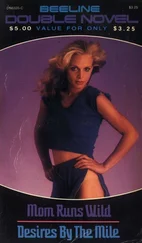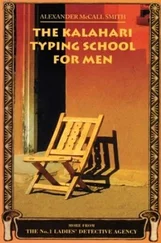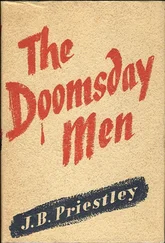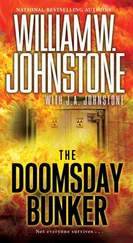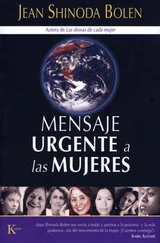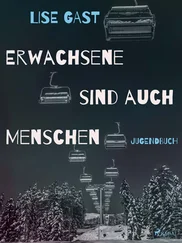For real soldiers fighting on the Western Front in cratered, moon-like landscapes, having to face clouds of suffocating gas, flamethrowers (first used in 1914) and attacks from above by aircraft, it must have seemed as if they had entered an alien world, dreamt up by the crazed imagination of a fiction writer. The futuristic aspects of modern warfare were not lost on one American professor of chemistry at the time. Chas Baskerville described how battle-hardened soldiers ran in terror from the ‘weird waves’ of gas and how later, when respirators were issued, the masked soldiers looked like strange ‘anteaters’ rather than human beings. He too saw the parallels in fiction, adding that when one day the history of gas warfare was written, ‘it will prove to be a document that would have caused Jules Verne to turn green with envy’. 32But it was not just poison gas that was born in the minds of fiction writers.
The British military was deeply sceptical about the value of super-weapons, believing that old-fashioned soldiering would win the day. So when British inventors came up with a new weapon, the top brass failed to grasp its full potential. The weapons were transported to the front in conditions of utmost secrecy. Their crates were marked simply TANK, and indeed they did look more like a water cistern than a deadly superweapon. But surprising the enemy with a fiendish new invention offended the British sense of fair play. As a result, when the tank was first used, in 1916 at the Somme, too few were sent into battle and their effect was indecisive.
Before it appeared on the battlefield, the tank had already rumbled its way across the pages of fiction. Albert Robida predicted tanks as early as 1883. Then, thirteen years before the metal monsters saw the light of day, H. G. Wells described their use in battle in his story ‘The Land Ironclads’ (1903). This was closely followed by Captain C. E. Vickers’ story ‘The Trenches’ (1908). The tank’s inventor, engineer Ernest Swinton, had read these stories. Indeed, Swinton was himself a writer whose stories had appeared in Strand Magazine . 33
The idea of scientific superweapons, from heat rays to gas bombs, became firmly rooted in the public consciousness in the years before World War I. Most novels and stories about them accepted without question that social progress was an automatic result of scientific advance. This optimistic vision of the future would last long into the twentieth century, despite the technological horrors of World War I. Indeed, it would make a deep impression on Leo Szilard, who in the last year of the war was a young and very green recruit in the Austro-Hungarian army. The man who in 1950 came up with the doomsday bomb was, appropriately enough, an ordnance cadet learning how to use explosives.
As we have seen, Edward Bulwer-Lytton’s The Coming Race – inspired by the sciences of evolution and electricity – was one of the first novels to link the discovery of new energy sources with superweapons. Vril gave its owners godlike power, and as a result warfare had become an act of suicide. In a world where both sides are armed with superweapons, the fear of mutually assured destruction (subsequently abbreviated to ‘MAD’) acts as a deterrent. The message from Bulwer-Lytton and many later writers was that peace could be won in the laboratory.
Frank Stockton’s The Great War Syndicate , published in America in 1889, is typical of many subsequent novels to examine the role of science and scientists in war. Stockton predicts the alliance between science and industry that would become a distinctive feature of total war in the twentieth century. His matter-of-fact account of a war between the United States and the global superpower of the day, Great Britain, tells how the unprepared US Government accepts an offer from a syndicate of industrialists to fight the war. Motivated by the desire to avoid the harmful economic effects of a ‘dragging war’, the Syndicate is formed from ‘men of great ability, prominent positions, and vast resources, whose vast enterprises had already made them known all over the globe’. 34
From the outset, these global capitalists know they need a winning weapon. They employ eminent scientists to advise on buying up patents in ‘certain recently perfected engines of war, novel in nature’. These include revolutionary armour plating for their ships and a devastating missile, the ‘instantaneous motor-bomb’, launched not by gunpowder but by the new energy source of the day – electricity. How these missiles work is a ‘jealousy guarded secret’. 35Their use is supervised by a team of ‘scientific men’. Indeed, in Stockton’s novel, the military has little role in the war; the ship from which the instantaneous motor-bomb is fired is crewed by merchant seamen, and the missile is launched by scientists. This is ‘experimental’ warfare, writes Stockton, conducted at the touch of a button. 36Twenty-six years later, the first use of poison gas would be described by Fritz Haber as a Versuch , an ‘experiment’. 37
Frank Stockton’s novel dramatically anticipates the age of total war that would begin in World War I and lead to the vast scientific and industrial endeavour of the Manhattan Project. The Syndicate mobilizes the ‘manpower’ (a word coined in 1915) 38of the entire nation in its efforts to defeat the British: ‘In the whole country there was scarcely a man whose ability could not be made available in their work, who was not engaged in their service; and everywhere, in foundries, workshops, and ship-yards, the construction of their engines of war was being carried on by day and by night.’ 39
The instantaneous motor-bomb is so devastating that the Syndicate decides to make a public demonstration of its power on a disused fortress. This reluctance to spring a surprise attack on an enemy with a new weapon shows that the belief in fair play was equally strong in both Great Britain and America. However, Fritz Haber felt no such constraints and, by 1945 this change in attitude had been accepted on both sides of the Atlantic. Leo Szilard’s pleas for the power of the atomic bomb to be demonstrated on an uninhabited island rather than on an unsuspecting city fell on deaf ears.

British officers are filled with ‘amazement and awe’ as they watch the devastation caused by the instantaneous motor-bombs. From Frank Stockton’s The Great War Syndicate of 1889 .
Like modern nuclear weapons, the motor-bomb could be set to explode either above or below the surface of the ground. To destroy the fortress, a ground-penetrating missile is used. In an instant the fort is vaporized, producing an ominous mushroom cloud: ‘a vast brown cloud… nearly spherical in form, with an apparent diameter of about a thousand yards’. Like atomic fallout, the ‘vast dust-clouds’ are carried across the land by the breeze, ‘depositing on land, water, ships, houses, domes, and trees an almost impalpable powder’. 40For the British military, as for the Japanese in 1945, the new weapon is utterly beyond their comprehension. ‘This was not war,’ said the British. ‘It was something supernatural, awful!’ Shock and awe began in the minds of writers such as Frank Stockton. 41
With its two-dimensional characters and deadpan style, The Great War Syndicate did not deserve to win any literary awards. But such books had a powerful effect. They changed attitudes to war, creating an expectation that, thanks to science and technology, future conflicts would be quick and low in casualties. As Stockton says at the end of his novel:
The desire to evolve that power which should render opposition useless had long led men from one warlike invention to another. Every one who had constructed a new kind of gun, a new kind of armor, or a new explosive, thought that he had solved the problem, or was on his way to do so. The inventor of the instantaneous motor had done it. 42
Читать дальше



